Tidy mushroom growing hack: Ever dreamt of harvesting a bounty of delicious mushrooms right in your own home, but shuddered at the thought of the mess? I get it! The idea of cultivating fungi indoors can conjure images of scattered spores and unruly growth. But what if I told you there’s a simple, almost unbelievably clean way to grow your own gourmet mushrooms?
Mushroom cultivation has a rich history, dating back centuries in various cultures. From ancient China, where mushrooms were revered for their medicinal properties, to the modern-day gourmet kitchens of Europe, these fascinating fungi have always held a special place. But traditionally, growing them involved dedicated spaces and careful environmental control.
That’s where this DIY mushroom growing hack comes in. We’re going to bypass the complicated setups and embrace a method that’s not only incredibly effective but also surprisingly tidy. Imagine enjoying fresh, flavorful mushrooms in your meals, knowing you grew them yourself, without turning your kitchen into a fungal jungle. This tidy mushroom growing hack is perfect for apartment dwellers, busy individuals, or anyone who wants to experience the joy of home-grown mushrooms without the mess. So, let’s dive in and unlock the secrets to a clean and fruitful mushroom harvest!
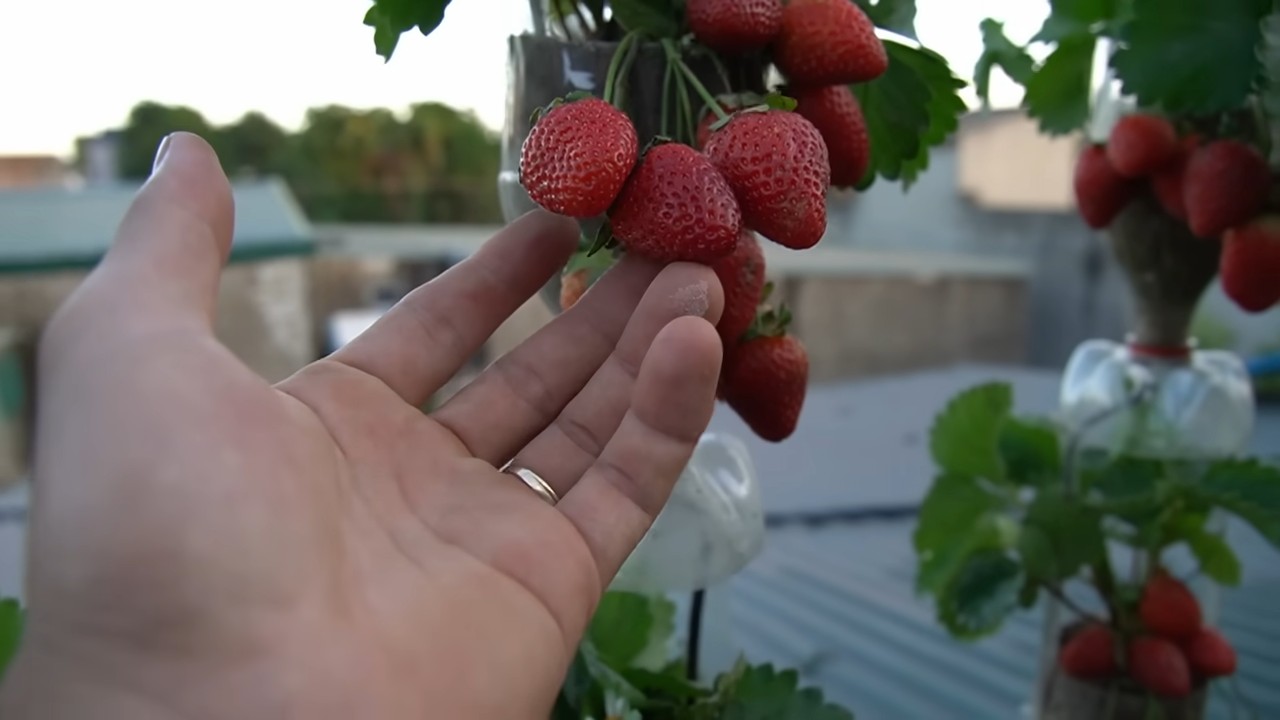
DIY: The No-Mess Mushroom Growing Hack (Even I Can Do It!)
Okay, let’s be honest. Growing mushrooms at home sounds super cool, right? But the thought of dealing with messy substrates and potential contamination? Not so cool. That’s why I’m sharing my tried-and-true, practically foolproof, and definitely less-messy mushroom growing hack. This method focuses on using pre-sterilized grain spawn bags and a simple monotub setup, making the whole process way more manageable, especially for beginners like I was!
What You’ll Need: The Mushroom Growing Arsenal
Before we dive in, let’s gather our supplies. Don’t worry, you probably have some of this stuff already!
* Pre-Sterilized Grain Spawn Bag: This is the heart of our operation. I recommend buying one online from a reputable vendor. Look for rye grain or millet spawn bags. These are already sterilized, saving you a ton of time and potential headaches.
* Coco Coir Brick: This will be our substrate. Coco coir is a fantastic, readily available, and relatively contamination-resistant option. You can find it at most garden centers or online.
* Vermiculite: This helps with moisture retention and aeration in our substrate. Again, garden centers or online retailers are your best bet.
* Monotub: A clear plastic storage tub with a lid. Size depends on how much you want to grow, but a 66-quart tub is a good starting point. Make sure it’s clear so light can reach your mushrooms.
* Spray Bottle: For misting the inside of the tub.
* Rubbing Alcohol (70% Isopropyl Alcohol): For sanitizing everything! This is crucial to prevent contamination.
* Latex Gloves: To keep your hands clean and prevent contamination.
* Micropore Tape: For covering the holes we’ll drill in the monotub. This allows for air exchange while keeping contaminants out.
* Drill with a 1/4″ Drill Bit: For drilling the air exchange holes.
* Measuring Cup: To measure the coco coir, vermiculite, and water.
* Large Pot or Bucket: For pasteurizing the substrate.
* Thermometer: To monitor the temperature of the substrate during pasteurization.
* Optional: Polyfill: As an alternative to micropore tape for the air exchange holes.
Phase 1: Preparing the Substrate – The Foundation of Our Mushroom Kingdom
This is arguably the most important step. A properly prepared substrate is key to a successful grow. We’re going to pasteurize our coco coir and vermiculite mixture. Pasteurization kills off competing organisms without completely sterilizing the substrate, which is beneficial for mushroom growth.
1. Hydrate the Coco Coir: Place your coco coir brick in a large pot or bucket. Add approximately 4 quarts (1 gallon) of boiling water per brick. The coco coir will expand significantly. Let it sit for at least 30 minutes, or until it’s cool enough to handle.
2. Mix in the Vermiculite: Once the coco coir is cool, squeeze out any excess water. You want it to be moist but not dripping wet. Add the vermiculite. A good ratio is 1 part coco coir to 1 part vermiculite. Mix thoroughly until everything is evenly distributed.
3. Pasteurize the Substrate: Place the coco coir and vermiculite mixture back into the pot or bucket. Add enough boiling water to bring the mixture to a “field capacity” level. Field capacity means that when you squeeze a handful of the substrate, you should only get a few drops of water.
4. Monitor the Temperature: Use your thermometer to monitor the temperature of the substrate. You want to maintain a temperature between 160-180°F (71-82°C) for at least 1-2 hours. You can do this by placing the pot on a stove burner on low heat, or by wrapping the bucket in towels to insulate it. Stir the mixture occasionally to ensure even heating.
5. Cool Down: After pasteurization, let the substrate cool down to room temperature. This can take several hours. Make sure the container is covered to prevent contamination.
Phase 2: Setting Up the Monotub – Our Mushroom Home
Now that our substrate is ready, it’s time to prepare the monotub. This is where the magic happens!
1. Sanitize Everything: This is non-negotiable! Thoroughly clean the monotub and lid with soap and water. Then, spray everything down with rubbing alcohol and let it air dry completely. Sanitize your gloves, spray bottle, and any other tools you’ll be using.
2. Drill Air Exchange Holes: Drill four 1/4″ holes on each of the long sides of the monotub, about 2-3 inches from the top. Drill four more 1/4″ holes on each of the short sides of the monotub, also about 2-3 inches from the top. These holes will allow for air exchange, which is essential for mushroom growth.
3. Cover the Holes: Cover the holes with micropore tape on both the inside and outside of the tub. This will prevent contaminants from entering while still allowing for air exchange. Alternatively, you can stuff the holes with polyfill.
4. Prepare the Liner (Optional but Recommended): While not strictly necessary, using a liner inside the monotub can make harvesting easier and help prevent side pinning (mushrooms growing on the sides of the tub). You can use a large trash bag or a sheet of plastic. Cut it to size and place it inside the tub, allowing it to drape over the edges.
Phase 3: Spawning and Colonization – The Beginning of Life
This is where we introduce the grain spawn to the substrate. This is a delicate process, so pay close attention!
1. Sanitize Again!: Before opening your grain spawn bag, sanitize your gloves and the outside of the bag with rubbing alcohol.
2. Break Up the Grain Spawn: Gently break up the grain spawn inside the bag. You want to loosen the grains so they can be easily mixed with the substrate.
3. Layer the Substrate and Spawn: Pour a layer of the pasteurized substrate into the bottom of the monotub, about 2-3 inches thick. Then, sprinkle a layer of grain spawn over the substrate. Repeat this process, alternating layers of substrate and spawn, until you’ve used all of the grain spawn and substrate. The top layer should be a layer of substrate.
4. Level the Surface: Gently level the surface of the substrate with your hands.
5. Close the Lid: Place the lid on the monotub. Make sure it’s not completely airtight. You want some air exchange to occur.
6. Colonization: Now comes the waiting game. Place the monotub in a dark, warm place (around 70-75°F or 21-24°C). Avoid direct sunlight. The mycelium (the vegetative part of the mushroom) will start to colonize the substrate. This process can take anywhere from 2-4 weeks.
7. Monitor Colonization: Check the monotub every few days. You should see white, fuzzy growth spreading across the substrate. This is the mycelium. If you see any green, black, or other unusual colors, it could be contamination. Isolate the tub immediately and consider discarding it to prevent the contamination from spreading.
Phase 4: Fruiting – The Mushroom Bloom
Once the substrate is fully colonized (covered in white mycelium), it’s time to initiate fruiting. This involves creating the right conditions for the mushrooms to form.
1. Introduce Light: Move the monotub to a location with indirect light. Mushrooms need light to know which way to grow.
2. Increase Humidity: Mushrooms need high humidity to fruit. Mist the inside of the monotub with your spray bottle 2-3 times a day. You want to see tiny droplets of water on the surface of the substrate.
3. Increase Air Exchange: Fan the monotub 2-3 times a day to increase air exchange. This helps to prevent the buildup of carbon dioxide, which can inhibit fruiting. You can do this by simply lifting the lid and waving it around for a few seconds.
4. Monitor for Pins: After a few days, you should start to see tiny mushroom “pins” forming on the surface of the substrate. These are the beginnings of your mushrooms!
5. Maintain Conditions: Continue to mist and fan the monotub regularly to maintain high humidity and good air exchange.
Phase 5: Harvesting – The Fruits of Your Labor
Congratulations! You’ve grown mushrooms! Now it’s time to harvest them.
1. Harvest When Mature: Harvest the mushrooms when the veils (the membrane that connects the cap to the stem) begin to break. This is when
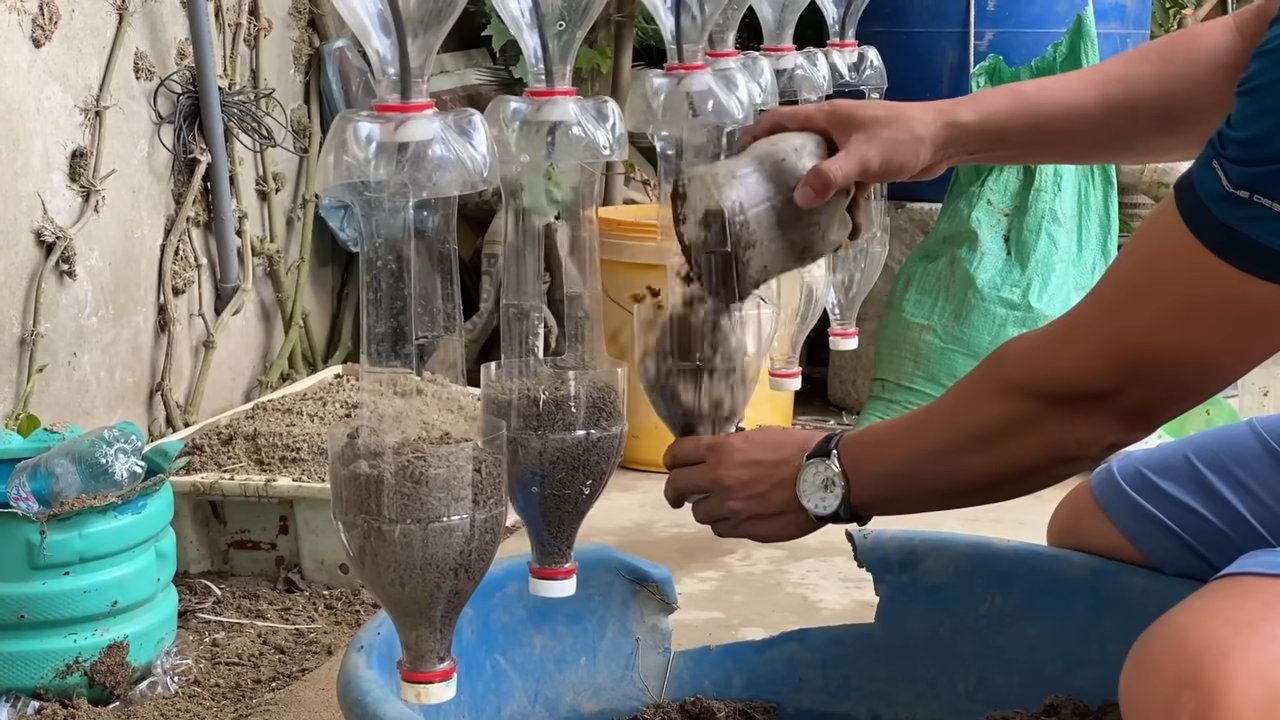
Conclusion
So, there you have it! This tidy mushroom growing hack isn’t just a clever trick; it’s a game-changer for anyone looking to cultivate delicious, homegrown mushrooms without the mess and hassle often associated with traditional methods. We’ve walked you through the simple steps, highlighting how easy it is to create a controlled and clean environment for your fungi to flourish. Forget about scattered substrate and unpredictable growth patterns – this method promotes a more organized and predictable harvest.
Why is this a must-try? Because it simplifies the entire process. It reduces the risk of contamination, which is a common pitfall for beginner mushroom growers. It maximizes space, allowing you to grow more mushrooms in a smaller area. And, perhaps most importantly, it makes the whole experience significantly more enjoyable. No more dreading the cleanup!
But the beauty of this tidy mushroom growing hack lies in its adaptability. Feel free to experiment with different types of containers. While we’ve suggested using clear plastic bins for easy monitoring, you could also try using buckets, tubs, or even repurposed containers. Just ensure they are clean, food-grade, and allow for proper ventilation.
Consider exploring different substrates as well. While the recipe we’ve outlined uses a specific blend, you can adjust it based on the type of mushrooms you’re growing. Some mushrooms thrive on supplemented sawdust, while others prefer straw or coffee grounds. Research the specific needs of your chosen mushroom variety and tailor your substrate accordingly.
Another variation to consider is the addition of a humidity tent. While the enclosed container helps maintain moisture, some environments may require extra humidity, especially during the fruiting stage. A simple plastic bag or a larger container placed over your mushroom growing setup can create a mini-greenhouse effect, boosting humidity levels and encouraging healthy mushroom development.
Don’t be afraid to get creative with your lighting. While mushrooms don’t require direct sunlight, they do need some light to trigger pinning (the formation of baby mushrooms). Experiment with different light sources, such as LED grow lights or even indirect natural light, to find what works best for your setup.
We are confident that this tidy mushroom growing hack will revolutionize your home cultivation efforts. It’s a simple, effective, and rewarding way to enjoy fresh, homegrown mushrooms year-round.
Now, it’s your turn! We encourage you to give this method a try. Gather your supplies, follow the steps, and witness the magic of mushroom cultivation firsthand. And most importantly, share your experience with us! We’d love to hear about your successes, your challenges, and any variations you’ve discovered. Post pictures of your mushroom harvests, share your tips and tricks, and let’s build a community of tidy mushroom growers together. Happy growing!
Frequently Asked Questions (FAQ)
What types of mushrooms can I grow using this tidy mushroom growing hack?
This method is versatile and can be used to grow a variety of mushroom species, particularly those that thrive on supplemented substrates. Some popular choices include oyster mushrooms (various strains like blue, pink, and golden), shiitake mushrooms, and lion’s mane mushrooms. However, it’s crucial to research the specific needs of the mushroom species you intend to grow. Some mushrooms may require different substrate formulations, temperature ranges, or humidity levels. For instance, button mushrooms, which are commonly grown commercially, typically require a casing layer and a different set of environmental conditions, making them less suitable for this particular method. Always consult reliable mushroom cultivation resources to ensure you’re providing the optimal environment for your chosen species.
How do I prevent contamination in my mushroom growing container?
Contamination is a common concern in mushroom cultivation, but several steps can be taken to minimize the risk. First and foremost, cleanliness is paramount. Thoroughly clean and sanitize your container, tools, and work area before starting. Use a disinfectant solution like isopropyl alcohol or bleach diluted with water. Ensure your substrate is properly pasteurized or sterilized to eliminate competing organisms. When handling the substrate and spawn, wear gloves and a mask to prevent introducing contaminants. Monitor your container regularly for any signs of mold or other unwanted growth. If you detect contamination, remove the affected area immediately and dispose of it properly. Maintaining proper ventilation and humidity levels can also help prevent contamination, as stagnant, overly humid environments are more prone to mold growth.
How long does it take for mushrooms to grow using this method?
The time it takes for mushrooms to grow depends on several factors, including the mushroom species, the substrate used, and the environmental conditions. Generally, it takes a few weeks for the mycelium (the vegetative part of the mushroom) to colonize the substrate. Once the substrate is fully colonized, pinning (the formation of baby mushrooms) will begin. From pinning to harvest, it can take anywhere from a few days to a week or more, depending on the species. Oyster mushrooms, for example, are known for their relatively fast growth rate, while shiitake mushrooms may take longer. Maintaining optimal temperature and humidity levels is crucial for accelerating growth. Be patient and observe your mushrooms closely, and you’ll be rewarded with a bountiful harvest in due time.
What do I do if my substrate dries out?
Maintaining adequate moisture is essential for successful mushroom cultivation. If you notice that your substrate is drying out, there are several steps you can take to rehydrate it. First, mist the substrate with distilled or filtered water using a spray bottle. Avoid using tap water, as it may contain chlorine or other chemicals that can harm the mycelium. You can also increase the humidity inside the container by covering it with a plastic bag or placing it inside a larger container with a damp towel. Ensure there is still some ventilation to prevent excessive moisture buildup, which can lead to contamination. In severe cases of dryness, you may need to carefully remove the substrate from the container and soak it in water for a short period before returning it. Monitor the moisture levels regularly and adjust your watering schedule as needed to maintain optimal hydration.
How do I know when my mushrooms are ready to harvest?
Knowing when to harvest your mushrooms is crucial for maximizing their flavor and texture. The ideal harvest time varies depending on the mushroom species. Generally, mushrooms are ready to harvest when their caps have fully expanded but before they begin to drop spores. For oyster mushrooms, this is typically when the edges of the caps start to flatten out or curl upwards. For shiitake mushrooms, it’s when the caps have fully opened and the gills are visible. Lion’s mane mushrooms are ready to harvest when they are firm and have developed their characteristic “mane” of spines. Gently twist or cut the mushrooms from the substrate, taking care not to damage the surrounding mycelium. Harvesting at the right time will ensure you enjoy the best possible flavor and texture from your homegrown mushrooms.
Can I get multiple flushes (harvests) from the same substrate block?
Yes, you can often get multiple flushes, or harvests, from the same substrate block. After harvesting your first flush of mushrooms, allow the substrate to rest for a few days. Rehydrate the substrate by misting it with water or soaking it briefly. Then, return the substrate to its growing environment and maintain optimal conditions. You may need to adjust the temperature or humidity levels slightly to encourage a second flush. Subsequent flushes may be smaller than the first, but you can often get several harvests from the same substrate block before it becomes depleted of nutrients. Once the substrate stops producing mushrooms, you can compost it and use it to enrich your garden soil.
What are the best lighting conditions for growing mushrooms indoors?
Mushrooms don’t require direct sunlight, but they do need some light to trigger pinning (the formation of baby mushrooms). Indirect natural light is often sufficient, but if you’re growing mushrooms in a dark room, you’ll need to provide artificial lighting. LED grow lights are a popular choice, as they are energy-efficient and provide a broad spectrum of light. A simple fluorescent light can also work. The key is to provide enough light to stimulate pinning without overheating the growing environment. A few hours of light per day is usually sufficient. Experiment with different light sources and durations to find what works best for your specific setup and mushroom species.
What should I do with the substrate after I’m finished growing mushrooms?
After you’ve harvested all the mushrooms you can from your substrate block, don’t throw it away! Spent mushroom substrate is a valuable resource for your garden. It’s rich in nutrients and organic matter, making it an excellent soil amendment. You can compost the substrate and then use it to enrich your garden beds or potting soil. Alternatively, you can directly add the spent substrate to your garden as a mulch. It will help retain moisture, suppress weeds, and slowly release nutrients into the soil. Spent mushroom substrate is particularly beneficial for vegetable gardens and flower beds. It’s a sustainable way to recycle your mushroom growing waste and improve the health of your plants.

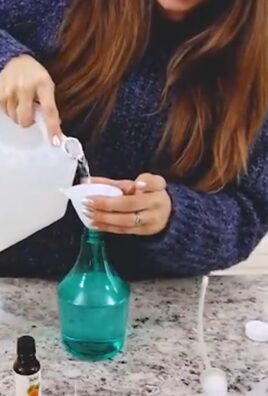
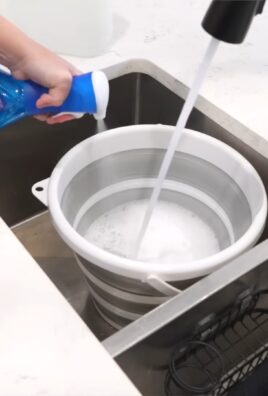
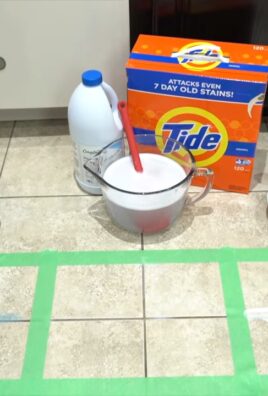
Leave a Comment